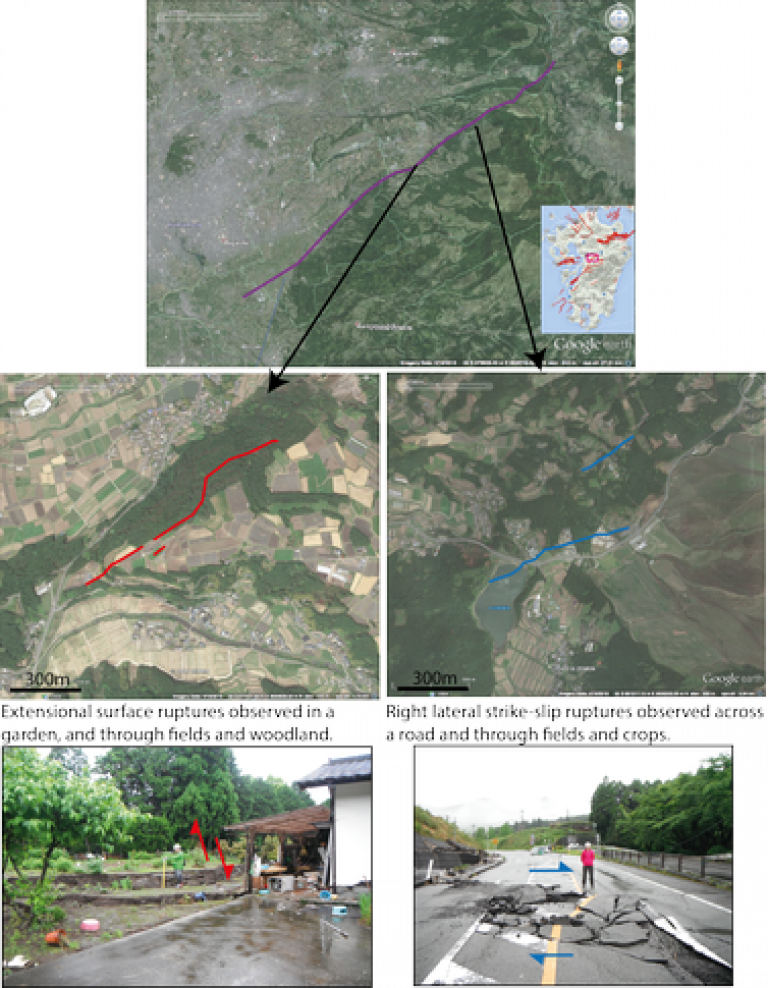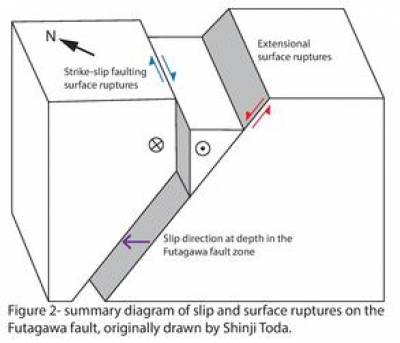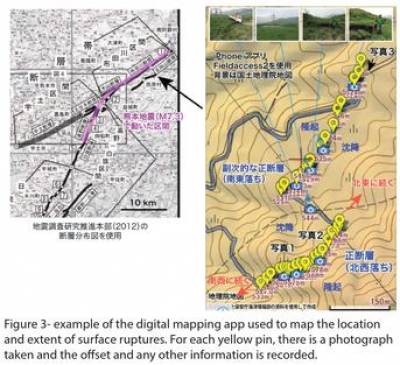Tracing the surface ruptures of the Kumamoto earthquake (16th April 2016), Kyushu, Japan
23 May 2016
On the 10-11th May, Zoë Mildon, a PhD student in the IRDR, assisted with mapping the surface ruptures from the recent Kumamoto earthquakes in Japan.
 She is currently on a four-month fellowship at IRIDeS
(International Research Institute of Disaster Science) in Tohoku University,
and was assisting Prof. Shinji Toda (IRIDeS) and Dr Daisuke Ishimura (formerly
IRIDeS) with the field survey.
She is currently on a four-month fellowship at IRIDeS
(International Research Institute of Disaster Science) in Tohoku University,
and was assisting Prof. Shinji Toda (IRIDeS) and Dr Daisuke Ishimura (formerly
IRIDeS) with the field survey.
On the first day, Zoë helped to trace two strands of the surface ruptures (where the movement from the earthquake can be seen at the surface), joining together previously mapped sections (see Figure 1). The ruptures passed through forest, farmland and properties and were especially difficult to trace in areas of dense vegetation.
Geologists classify faults into three different types: strike-slip faults where two blocks of rock move horizontally against each other (see blue arrows in Figure 1 & 2), normal faults show vertical movement and allow extension (see red arrows in Figure 1 & 2), and thrust faults which also move vertically but allow compression/shortening. Along the Futagawa fault (close to Kumamoto city), right lateral strike-slip faulting and extensional surface ruptures were observed following the earthquake (Figure 1 & 2). Models of the movement during the earthquake showed that the movement at depth is a combination of strike-slip and extension, which is split at the surface into the two types of surface ruptures (shown in the photographs in Figure 1). This is believed to be the first time that this phenomenon has been observed in Japan.

The surface ruptures were mapped using an app written for iPhone, an example view is shown in Figure 3. This app records the GPS location and then allows the user to take photographs and record the fault offset and any other notable features. Several research groups are mapping the surface ruptures, and this app allows easy sharing of data and observations.
The observations will be presented at JpGU Annual conference on the 25th May in Tokyo by Prof. Toda, and will be published as a journal article in due course.
Zoë has written more about her experiences in Japan as a visiting researcher for the IRDR blog.

 Close
Close






